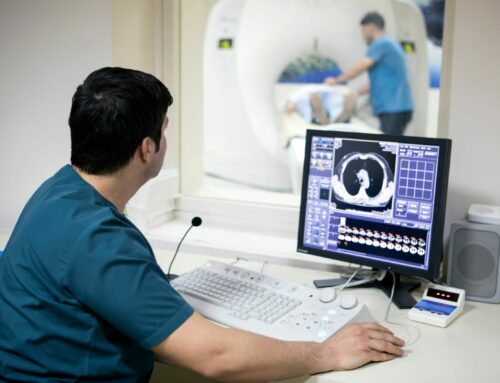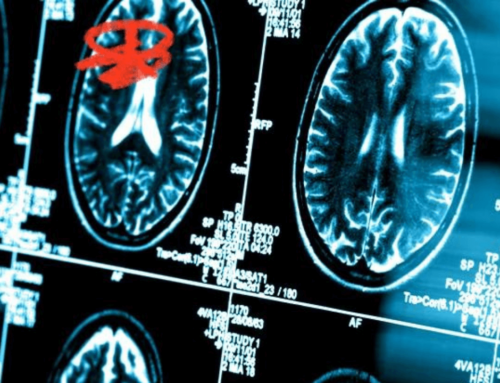By Matt Becker, Vice President of Interoperability at Kno2 |
What is Electronic Patient Matching Anyway?
According to HealthIT.gov, patient matching is defined as “the identification and linking of one patient’s data within and across health systems to obtain a comprehensive view of that patient’s health care record.” At a minimum, one can accomplish patient matching by automatically linking multiple demographic data fields such as name, birth date, phone number, and address. Therefore, patient matching is a critical component to interoperability and the nation’s health information technology infrastructure.
While this is a widely accepted definition, I have found that patient matching sounds straightforward. In reality, it is one of the most complicated parts of interoperability, and one of the most important to get right. When providers seek to implement patient matching, they ensure the patient’s primary data is entered into the system. The basic demographic information will ideally connect the right patient to the correct records across any care setting if the data is accurate. Sounds simple, right?
Well, if I need records for James Smith, the patient matching algorithm must search multiple entries for this prevalent name by considering all demographic information inputted by staff. Since James Smith is a very common name, identifying the correct person can be incredibly difficult. Matching a patient not only depends on the information staff has entered but also the information other staff members at other facilities and systems may have inputted incorrectly. In this instance, a query for James Smith can match on zip code alone.
The human element is what makes patient matching one of the most frustrating parts of interoperability. Once the electronic matching occurs, a human can make the wrong decision on which patient to select, leading to potentially adverse outcomes on the quality of care. In fact, a recent report from the eHealth Initiative Foundation and NextGate confirmed that 38% of U.S. healthcare providers reported an adverse event due to a matching patient issue.
Patient matching isn’t a magic bullet to achieve interoperability.
When we look at the industry, many players are trying to crack the interoperability code by making patient matching more efficient and ubiquitous. The options seem like easy solutions, however, implementation cannot happen without cooperation from clinical teams, frontline staff, and patients. Here are a few of the most powerful patient matching solutions offered today and why they are not a one-stop-shop solution for your interoperability challenges.
Enterprise Master Patient Index (EMPI) helps hospitals and health systems to eliminate duplicate patient records and inaccurate patient information across IT systems. EMPI is considered a cross-platform, meaning it aggregates the patient ID from multiple systems and correlates it to a master patient index. However, this EMPI platform is only the start of patient identification accuracy. It can be challenging to implement, and the platform requires full participation with consistent refinement and uploading of patient data. If there is one thing we have seen these days, it’s that getting patient consent to do just about anything — especially with their data — can be frustrating and challenging.
Record Location Service (RLS) is a tool that helps you find the patient across various EHR connections through a centralized database of known patient encounters across the country. In theory, RLS leverages medical record numbers and a customizable scoring algorithm to improve workflow across clinical teams. Unfortunately, this method is not widely implemented, and often newer patients suffer as a result.
The idea of a National Patient Identifier was introduced in 1996 when HIPAA called for a system that would assign each U.S. citizen a permanent and unique number to be used across the continuum of care. Due to privacy concerns, Congress did not allow the Department of Health and Human Services to implement national patient identifiers. While this is a solution that I support, the sheer scale of implementing standardized system ID numbers to all aspects of care would come with astronomical monetary, time, and maintenance costs.
The reality is while all of these solutions seem like magic bullets, they are not. Any would be a tremendous step towards interoperability, but providers need to pump the brakes before going down these rabbit holes.
Pump the brakes and invoke the top five patient matching best practices.
Any of the aforementioned patient matching tactics can work, but not without the help of providers and clinical teams on the front lines. Recognizing that patient matching will always be an imperfect science is critical. Before approaching any “big ideas” regarding patient matching in your overall interoperability strategy, I encourage you to implement these five patient matching best practices.
BEST PRACTICE 1: Train your staff on the “why.”
Train your people and make sure they understand why accuracy in patient information is so critically important. Equip them with knowledge because algorithms only go so far. Help them understand that they are frontline defenders of sound interoperability — and that is important work. What feels manual and insignificant to them at the front desk is actually tied to automation and efficiencies for the entire office.
In addition to collecting the specific patient information:
- Watch for typos
- Understand that patient demographics are fluid and can change every single appointment.
- Capture the legal name – John Thomas III goes by “Trey” in another system. “Is Trey your legal name?”
- Identify name changes – “Has a married person taken their partner’s last name?”
BEST PRACTICE 2: Ask this one simple question
Accurate patient identification is critical to providing the best patient care. However, patient matching implications can happen during the patient registration process. Patient identifiers, such as demographic data, Social Security numbers, and patients’ addresses, can be mistyped easily; this may cause discrepancies and duplicate records in the system. You can eliminate this challenge by asking one simple question every time the patient enters your door: is your patient information still current and correct?
Just this small step can improve accuracy significantly. In addition, answering these questions can help you think about the impacts of patient matching to set up the best systems and processes.
BEST PRACTICE 3: Don’t fall into the “set it and forget it” mentality
Many approach patient matching implementations with a “set it and forget it mentality.” The number one thing I hear when connecting with providers is, “I put protocols in place so patient matching will automatically happen, right?” or “doesn’t my EHR already do patient matching for me?” The reality is patient matching — and interoperability at large — require consistent and ongoing adjustments. There is no solution in existence that magically fixes interoperability. It is a surprisingly manual process. If insufficient data and processes go into it, poor results will ensue. Thus, it is essential to revisit your algorithm to ensure it optimizes your patient matching automation.
BEST PRACTICE 4: Understand what you have
Many providers feel they need to start from scratch, but before you pay a developer to build your algorithm, evaluate current technology. Many EHRs come with patient matching capabilities “out of the box” that you can simply enable and configure.
BEST PRACTICE 5: Implement a process for exceptions
Again, many EHRs come with capabilities that already have an exceptions report that lists any electronic patient document that could not be matched automatically. Ensure your staff knows to run this report and that accountability is assigned to team members to work it on a daily basis.
 About the Author
About the Author
Matt Becker is the Vice President of Interoperability at Kno2, where his focus is on improving interoperability across the entire continuum of care. Matt is responsible for overseeing specific projects aimed to extend interoperability into hard to reach markets, and groups not previously part of government incentive programs to drive interoperability, such as LTPAC, behavioral health, emergency medical services, and more. He helps providers benefit from greater interoperability through Kno2’s connectivity platform, and makes his expertise available to assist clients, such as EHR vendors, who are in the process of using Kno2 to develop their interoperability vision and connectivity roadmap. In addition, he supports the ongoing evolution of Kno2’s innovative technology to address the ever-changing needs and requirements of providers, further empowering organizations to provide the highest quality of care.
Matt Becker actively volunteers and contributes to standards development and rulemaking. He is an elected member of the Carequality Steering Committee and selected as Committee Chair for the Patient Matching Workgroup at CommonWell Health Alliance. He also particpates with DirectTrust™, HIMSS, National Association for the Support of Long Term Care (NASL), PAICO Project, The Sequoia Project, and 360X Referral Management Protocol among other industry interoperability initiatives.












